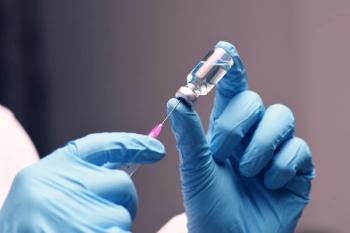
Young Woman With Back, Abdominal, and Shoulder Pain After Assault
A 1-year-old woman comes to theemergency department (ED) 3hours after a male friend punched herin the left lower back. The blowknocked her to the floor and madeher feel faint. She also noticed bloodin her urine when she voided athome after the injury.
A 21-year-old woman comes to theemergency department (ED) 3hours after a male friend punched herin the left lower back. The blowknocked her to the floor and madeher feel faint. She also noticed bloodin her urine when she voided athome after the injury.
In the ED, she complains of painin the region of the left posteriorcostal margin; it radiates to the leftupper quadrant and to her left shoulder.She also has pain and associatednumbness in her left arm.
Her temperature is 36.9oC(98.4oF); pulse rate, 110 beats perminute; respiration rate, 22 breathsper minute; and blood pressure,110/70 mm Hg. Before the incident,she had been in excellent health andhad no history of serious illness or injury.She takes no medications exceptoral contraceptives. She smokes 5 or6 cigarettes a day, does not drink alcohol,and does not use illicit drugs.
The patient appears to be inmoderate pain from her injury. Herskin is pale, but no diaphoresis is noted. A fresh, reddishpurple, fist-shaped ecchymosis is present over the left10th to 12th posterior ribs. The ribs are tender to palpationlocally, but there is no crepitation. No pain is referredto the injured area with anterior-posterior compressionof the chest wall. Breath sounds are equal in alllung fields. No hyperresonance is found on chest percussion.Mild tenderness is present at the left costovertebralangle, and palpation of the anterior left upper quadrantelicits mild to moderate tenderness beneath the subcostalmargin. No splenomegaly or rebound is noted.
Her left shoulder moves freely, and direct palpationreveals no tenderness. Deep breathing somewhat worsensthe pain that radiates to the top of her shoulder, overthe acromioclavicular joint and the distal clavicle. The remainderof the examination, including a neurologic evaluation,is normal.
White blood cell count is 8100/?L; platelet count,277,000/μL; hemoglobin level, 13.2 g/dL; and hematocrit,38.3%. Clean-catch urinalysis reveals a small amount ofblood (5 to 10 red blood cells per high-power field).
The patient is given ketorolac, 30 mg IM, which relievesmost of the pain in her back, abdomen, and leftshoulder. You order a chest film.
What does the radiograph reveal about the extent of thepatient's injury-and what further steps will you take?
IMPLICATIONS FOR PRACTICE
The case for a conservative approach. Expertsnow recommend that conservative management be consideredwhenever possible for splenic injuries that resultfrom blunt abdominal trauma. This recommendation isbased on outcomes research completed over the past15 years. The role of the spleen in preventing and controllinginfection underlies the impetus for conservative management.Splenic conservation eliminates the risk of overwhelmingpostsplenectomy infection and spares the patientfrom undergoing an initial laparotomy. Althoughlaparotomy for trauma has a very low incidence of associatedcomplications, it is best to avoid this major procedureif possible.
It has been suggested that more than 30% of splenicinjuries can be treated with nonoperative management orsplenorrhaphy. Splenic injury is no longer a mandatoryindication for laparotomy. Consider nonoperative managementin selected patients who are hemodynamically stableand can be closely monitored.1
For patients in whom nonoperative management,splenorrhaphy, and partial resection are unsafe or imprudent,consider splenectomy with autotransplantation. Thissimple and reliable technique allows preservation ofsplenic function.2
Diagnostic imaging. Contrast-enhanced CT scanningis the gold standard for detection and classification ofsplenic injuries. CT readily demonstrates lacerations andhematomas of the spleen and solid abdominal organs,thereby assisting in the determination of which patientsare candidates for nonoperative management.
Bedside ultrasound scanning performed in conjunctionwith the initial physical examination can detect hemoperitoneumand virtually eliminates the need for diagnosticperitoneal lavage. Although ultrasonography is highlysensitive in the identification of hemoperitoneum associatedwith splenic rupture, it is less sensitive in the detectionof subcapsular hematoma and intraparenchymal injuries.
Follow-up. A recent study found that follow-up radiologicstudies did not affect management. The investigatorsconcluded that follow-up imaging is not required for clinicallystable patients who have received blunt splenic traumaof low to moderate severity.3
Newsletter
Enhance your clinical practice with the Patient Care newsletter, offering the latest evidence-based guidelines, diagnostic insights, and treatment strategies for primary care physicians.

















































































































































































































































































